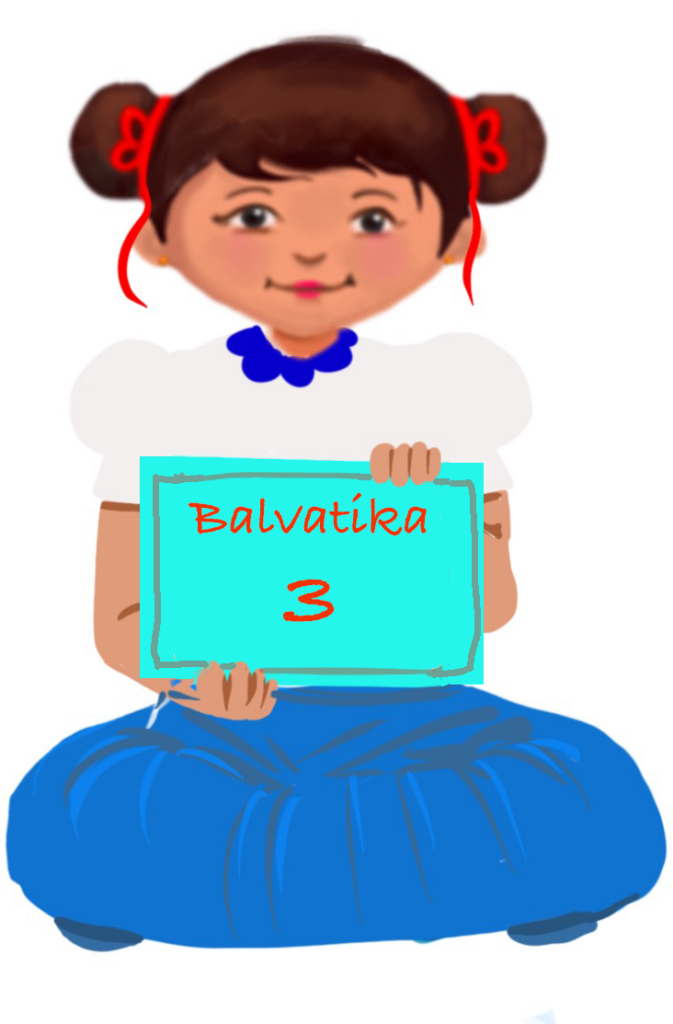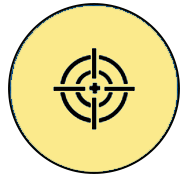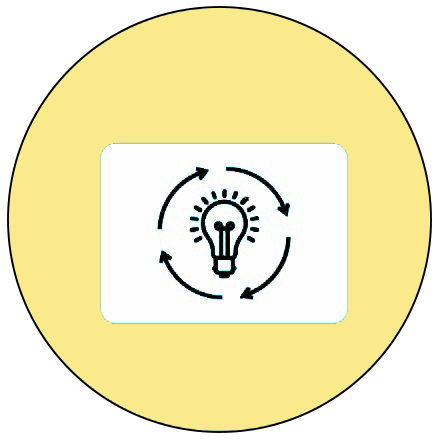
Pre-number Skills
Week 3 – Association Skills
Learning Outcome
Observes, understands, associates and forms connections with different objects found around them.
 Objective
Objective
Children will learn to associate things and form connections in the context of different objects around them.
 Prerequisites
Prerequisites
● Children are able to identify different items around them.
● The teacher can have a simple check for children’s ability to distinguish items by showing them different objects available in the classroom and asking them to identify them or do a simple sorting.
 Pre-teach Vocabulary
Pre-teach Vocabulary
● Names of different seasons: summer, winter, rainy season.
● Common household items at home.
Introduction
Material required:
- 20 sets of matching cards
- The teacher can ask the students to name their favourite animals and what they think those animals like to do or eat. For example, a dog likes to eat bones.
- The teacher explains that a few things go together, such as a dog and the bone, a cat and milk.
- Explain that they will play a game where they will match pictures that go together and talk about why they think they are a pair.
- The teacher shows a set of picture cards to the class. For example, she can hold up a card with a picture of a bee and another with a flower and ask the class if these pictures go together and why.
- The children can discuss the connection between the bee and the flower. (e.g., bees collect nectar from flowers to make honey).
- The class can be divided into groups of 4, and a set of cards can be given for matching.
- The teacher can move around and help the students make the connections between the pictures.
Picture Cards: Matching activity
Activity 1: Sort Household Objects
Aim:
To classify common household objects/pictures into groups based on where they are typically found in the house.
Importance of the activity for the children:
Helps in developing:
- Gross motor skills (moving around)
- Perceptual skills (observing the location of objects in different rooms in the picture)
- Cognitive skills (recognising different objects in the picture)
- Social skills (interaction and collaboration among children)
- Communication skills (discussions among the children)
- Critical thinking skills (analyse and categorise information)
- Fine motor skills (picking and placing the picture card in appropriate room in the chart)
- Language skills
- Long term memory
Resources required:
- Poster of the living room and flash cards of items in the living room.
- Poster of the kitchen and flash cards of items in the kitchen.
- Poster of the bed-room and flash cards of items in the bedroom.
Setting for the activity:
The activity can be done indoors or outdoors, depending on the availability of space.
Type of activity: Group activity
Preparation of activity:
- The teacher provides a chart paper (dividing it into 3 parts).
- Variety of household pictures and items to be kept ready.
Role of the teacher: Facilitator, mentor, observer
Procedure:
Introduction and Instructions – Indoors
- The teacher shows the poster of each room and discusses the items seen in the poster.
- The chart is divided into three sections, each representing a different room of a house: the living room, kitchen, and bedroom. To demonstrate the activity, the teacher selects a picture card corresponding to an item commonly found in one of these rooms and places it in the appropriate section of the chart.
- Later, children are asked to complete the activity.
Refer to ‘Attention and Focus’ Adaptations and Strategies given in the Main page of ‘Pre-number Skills’ if there are any neuro-diverse children in the class.
Observation:
- Children are made to observe the result of the activity as follows:
- The teacher ensures that the children put the right items in the right space.
- The teacher can note down his/her observations and guide the children accordingly. For example, if the child is still confused as to where to place the item, the teacher can help the child by demonstrating.
Suggested variation in activity:
- The teacher can set a timer and make it more challenging for children.
- A story can be created around the pictures as children sort them, imagining that the people are living in the house. This adds a creative element to the task and can inspire storytelling and imagination.
Video: Sort household objects
ISL Video: Sort household objects
Picture cards: Kitchen items
Picture cards: Living room items
Picture cards: Bedroom items
Activity 2: Complete the Puzzle
Aim:
To understand the part of the picture and complete it with the other given pieces.
Importance of the activity for the children:
Helps in developing:
- Gross motor skills (moving around)
- Perceptual skills (attention to details)
- Cognitive skill (recognising different objects in the picture)
- Social skills (interaction and collaboration among children)
- Communication skills (discussions among the children)
- Critical thinking skills (analyse and categorise information)
- Fine motor skills (picking and placing the picture card in appropriate place)
- Language skills
- Short term and Long term memory
Resources required:
- Level 1 Puzzle: Vehicles puzzle
- Level 2 Puzzle: Fruit basket puzzle
- Level 3 Puzzle: A scenery
Setting for the activity: Indoor activity
Type of activity: Individual
Preparation of activity:
The teacher keeps the puzzle pieces ready for the children.
Role of the teacher: Demonstrator and facilitator
Procedure:
- The teacher demonstrates how to fix the puzzle pieces, looking at the whole picture.
- The student then does the activity with the teacher and fixes the puzzle pieces.
- The student does the activity independently.
Observation:
The teacher may write his/her observations and challenges to give feedback.
Suggested variation in the activity:
- Puzzles from easy to difficult can be given to the children for solving.
- The activity can be done in a group. Each team member has to fix at least one piece before handing it over to the next team member.
- The activity can be played as a puzzle hunt where the pieces are hidden in a designated area and the team has to find and fix all the puzzle pieces.
Conclusion:
Children would learn to identify the part and the whole picture to complete the puzzles.
LTM: Complete the puzzle
Activity 3: Choose the Right Clothes
Aim:
To associate clothes with different seasons.
Importance of the activity for children:
Helps in developing:
- Gross motor skills (moving around)
- Perceptual skills (attention to details)
- Cognitive skills (associate different types of clothing with specific seasons)
- Math skills (sorting clothing items into categories based on the season)
- Social skills (working in teams)
- Communication skills (discussions among the children)
- Critical thinking skills (analyse and categorise information about suitability of clothing to different seasons)
- Fine motor skills (picking and placing the appropriate clothing on the corresponding poster board)
- Language skills
- Short term and Long term memory
Resources required:
- Flashcards with images of different clothing for different seasons, such as shorts, t-shirts, gloves, scarf, sweaters, etc.
- Poster depicting winter, summer and rainy seasons.
Setting for the activity: Indoor activity
Type of activity: Individual/group
Preparation of activity:
- Setting the activity area: Place the posters or boards representing the seasons in different areas of the room, ensuring there is enough space around each for participants to gather.
- Keep the flash cards with the images of clothes on a table so that all the children can see all the flash cards.
Procedure:
- The teacher will show the flash card for a season, e.g., summer.
- The teacher will ask the children to find the flash card that shows the clothing suitable for a hot summer day.
- Children can choose the flash cards with appropriate clothing for the season shown by the teacher.
- Once a child chooses a flash card, they can call out the season to let the teacher know they have identified the clothing.
- After demonstration by the teacher, distribute the clothing item images or cards randomly among the teams.
- Set a timer (if desired) and instruct the teams to discuss and decide which season each clothing item belongs to.
- Once the teams have made their decisions, they should place each clothing item on the corresponding season poster/board.
Refer to ‘Organisational skills’ Adaptations and Strategies given in the Main page of ‘Pre-number Skills’ if there are any neuro-diverse children in the class.
Observation:
Children are made to observe the result of the activity as follows:
- Children can be told why a particular clothing is suitable for a season.
- The teacher may write his/her observations and challenges to give feedback.
Suggested variation in the activity:
- The activity can be extended by adding formal clothes worn in office or party clothes, etc.
- Role play scenarios can be created, for example, going for a vacation or a wedding.
- A memory matching game can be played where the cards are shown once and kept upside down. The children must pick up only using their memory and match the cards to the relevant season.
Conclusion:
Children would learn to associate seasons with clothing.
Cross-Curricular Connection:
- Art class: Draw a part and a whole object for example, an apple.
- Language class: Use flashcards or objects to introduce opposites (e.g., big/small, hot/cold). Ask the child to match objects that represent opposite concepts.
- Physical Education class: Through a game of ‘pick a picture card and run to the appropriate marked area’ children can learn to associate objects with their use.
Video: Choose the right clothes
ISL Video: Choose the right clothes
LTM: Choose the right clothes
Check list for teacher:
| Activity | Yes | No | Sometimes |
| Children can: | |||
| Associate and form connections with different objects found around them | |||
| Associate clothing with seasons | |||
| Visualise the whole object given a piece of it | |||
| Classify and group common objects based on their usage/location | |||
| Focus on the activity | |||
| Complete the activity in the given time | |||
| Do the activity independently | |||
| Able to express verbally and through actions, expressions or gestures |
Fun Activity: Find the match

Assessment
Daily Routine Chart
- Create a visual chart outlining the child’s daily routine with pictures. Ask them to arrange the pictures in the correct order to represent their daily schedule.
Teacher Resource Document
| Source and Attribution of images: All images used in the above Assets and Aids are originally created. |
| This digital material has been developed by the Sri Sathya Sai Vidya Vahini Inclusive Education Project, a unit of Sri Sathya Sai Central Trust, Prasanthi Nilayam, as a collaborative offering in the service of our nation. |